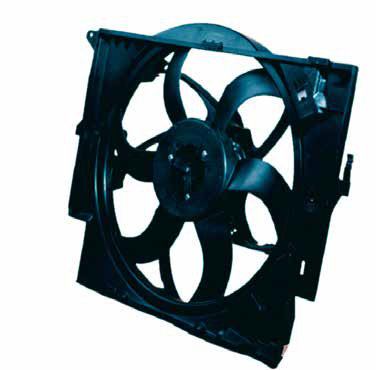Ansys Q3D Extractor
Lo strumento verticale per l'estrazione di parametri elettrici parassiti

Ansys è un prodotto Ansys Inc.

Ansys è un prodotto Ansys Inc.

Q3D Extractor esegue efficienti simulazioni quasi statiche di campo elettromagnetico 3D e 2D per estrarre i parametri RLCG e genera automaticamente il corrispondente modello di circuito SPICE equivalente.
Questi modelli possono essere impiegati per eseguire l’analisi di Signal Integrity e studiare fenomeni elettromagnetici come diafonia, TDR, Eye Diagram, al fine di comprendere le prestazioni di dispositivi di interconnessione, package di circuiti integrati, connettori, circuiti stampati, cavi.
Q3D Extractor consente di estrarre l’induttanza parziale e la resistenza dei componenti nella progettazione di dispositivi di potenza, ed è anche in grado di estrarre la capacità delle celle elementari per dispositivi touchscreen.
Q3D Extractor consente di importare i principali modelli geometrici MCAD ed ECAD come Altium, Autodesk, Cadence, Dassault, Mentor Graphics, PTC e Zuken.
Q3D Extractor interagisce con i diversi solver fisici della Suite Ansys Electronics, come Ansys Icepak per la progettazione termica e Ansys Mechanical per l’analisi strutturale,
consentendo così un’analisi multifisica leader del settore.

Invia le tue domande ai nostri tecnici specializzati!
Mettiti in contatto con uno dei nostri esperti, che ti potrà fornire risposte certe o consigliare soluzioni affidabili.

CASE STUDY
ptimization of the product starts with a strong correlation of the model with specifically designed tests under controlled conditions.
ansys automotive

training courses
The topics covered in the "ELECTRONICS / ELECTROMAGNETISM" courses focus on the design of electromechanical and electronic components by simulating electromagnetic fields and calculating circuit and system performance parameters.
training electronics ansys

CASE STUDY
The aim of this study was to reduce the weight of the world’s tallest aluminum mast for a new series of single mast sailing yachts manufactured by Perini Navi under the brand name Salute.
optimization modefrontier ansys marine rail-transport

CASE STUDY
Today the numerical simulation offers an important added value for dimensioning and testing of the motorbike’s chassis.
rail-transport ansys

CASE STUDY
GE Power is a world leading supplier of solutions for power generation, from engineering to manufacturing. Detecting and mitigating critical flow structures in water pumping stations is a complex engineering task, that has always been based on experimental activities. Now GE Power can rely also on CFD modelling and on the support of EnginSoft
ansys cfd energy